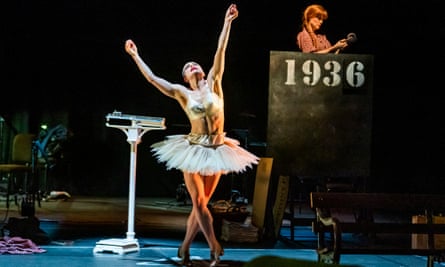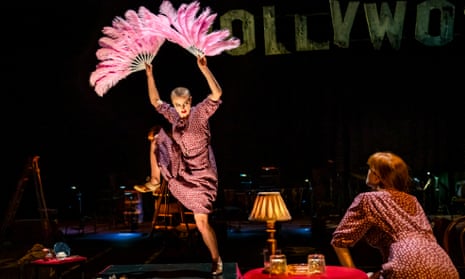It’s not simply the cardinal sins of Roman Catholic theology that are invoked in Kurt Weill and Bertolt Brecht’s sung ballet, their last collaboration. This pungent 35-minute work is rarely given its full title – Die sieben Todsünden der Kleinbürger, The Seven Deadly Sins of the Petty Bourgeoisie, but it’s the one that underlines Brecht’s Marxist approach. Sloth, Pride, Anger, Gluttony, Lust, Greed and Envy are ordered to create a narrative trajectory set in 1930s America, essentially an attack on capitalism and the hypocrisy of bourgeois values.
The twin-sister protagonists – Anna I portrayed by a singer and Anna II by a dancer, representing two sides of the same person – are sent away by their family to earn money to build them all a home. Over seven years, the sisters move through seven cities, one sin for each. In this spirited new Opera North production, social-distancing – so neatly managed as to be quickly forgotten – reinforces the loneliness of the Annas’ trials. And, thanks in part to Michael Feingold’s 1992 translation delineating both the exploited and the exploitative, the pairing of the lows of the Depression with the lavish highs of Hollywood meant an often uncanny resonance with contemporary American ills.

With less than five minutes per sin and city, things necessarily move apace, yet this relentless element is countered by the musical vignettes where the composer makes time slow down enough to allow emotion to register. Weill specialist and conductor James Holmes ensured the right balance between the two, helped by the considerable expressive force of Annas I and II. Wallis Giunta’s nuanced mezzo suggested a feeling Anna I was not just the cold pragmatist doing the family’s bidding. As Anna II, Shelley Eva Haden’s dancing verged on physical theatre, vividly wringing maximum effect from her more-pain-than-pleasure characterisations, with director and choreographer Gary Clarke’s added references ranging from Busby Berkeley to the Dying Swan.
The awful family, sung with relish by a male barbershop-style quartet, get their Louisiana home. They may not care that the sisters have been sacrificed on the altar of money, but we are made to.

Comments (…)
Sign in or create your Guardian account to join the discussion